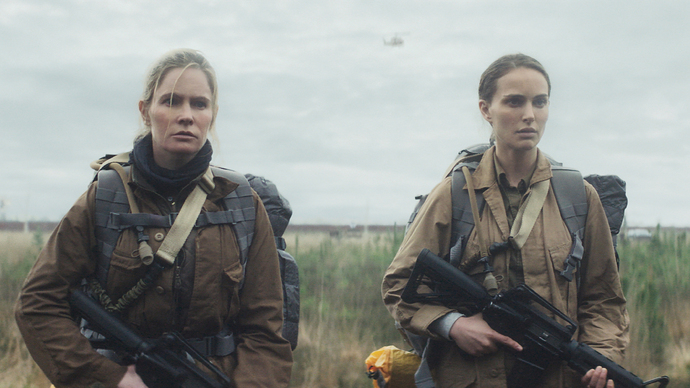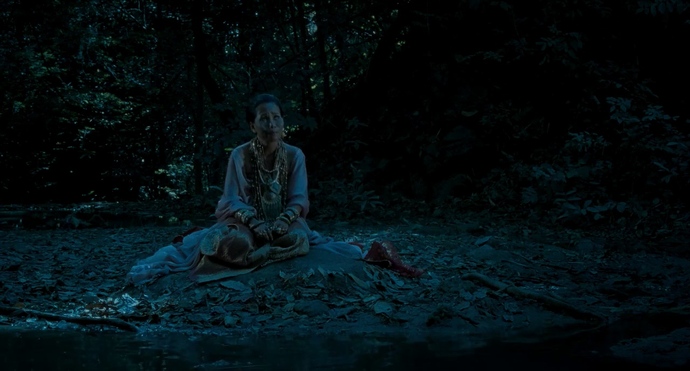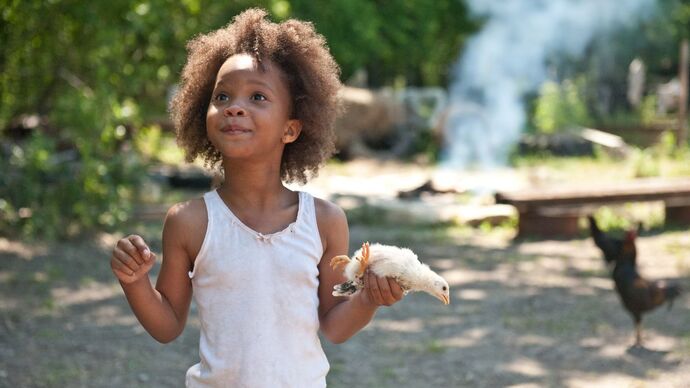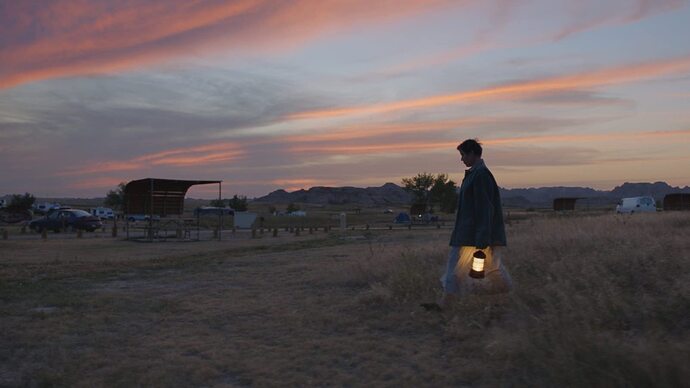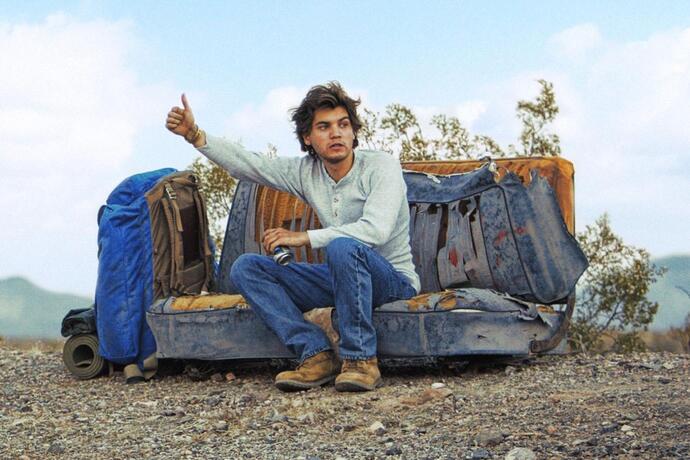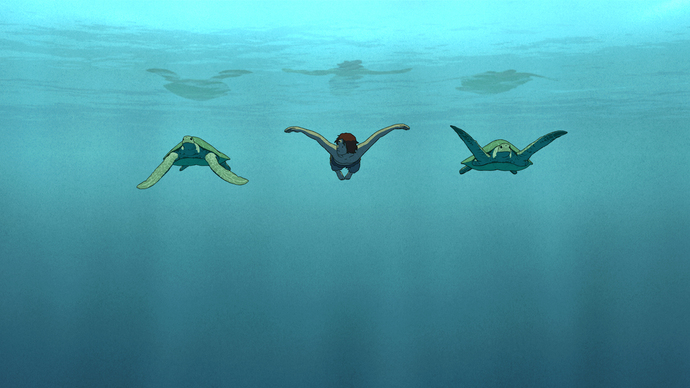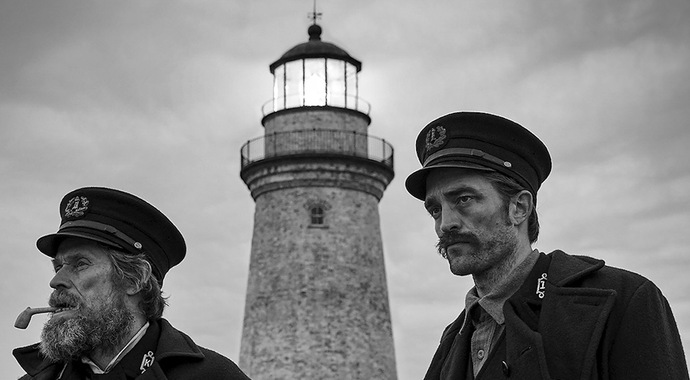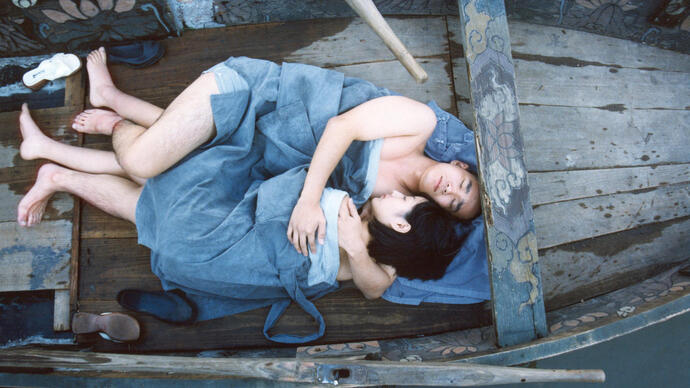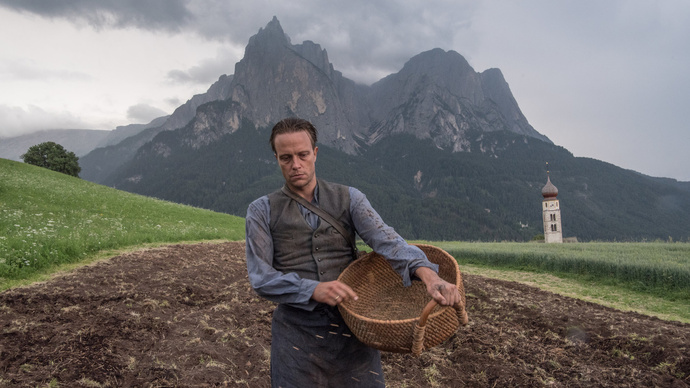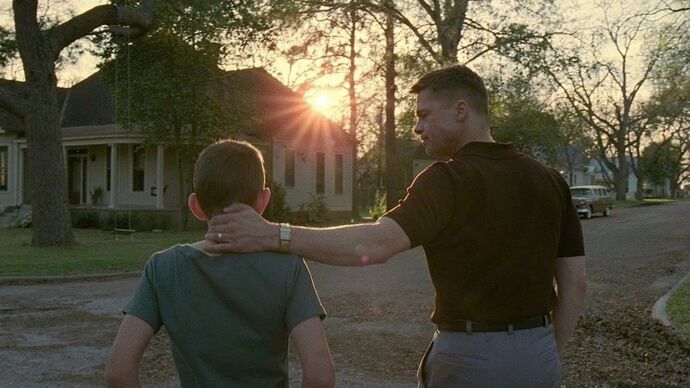And then there are those movies where the setting is so uniquely crafted and remarkably realized that the setting itself starts to feel like a character of its own. (If you’ve ever seen Lost, you know how the Island eventually became a mythical entity. Yeah, that’s what we mean.) Here are some of the best movies where the flora and fauna are more than just a pretty backdrop but an integral part of the plot and basically characters in and of themselves.
10. Annihilation (2018)
Annihilation is like a cancer movie, except the victim isn’t a person—it’s Earth itself. Like cancer, the “Shimmer” is an unexplained phenomenon that strikes suddenly and without warning. Biologist Lena (Natalie Portman) runs through some science jargon about rapidly dividing cells, setting up the premise that Earth’s decay is being sped up by some kind of metaphoric tumor. Don’t let the sci-fi elements fool you—Annihilation is definitely more artsy than generic genre fare. Director Alex Garland finds balance between explanation and ambiguity; we aren’t spoon fed information, but it’s also not the type of horror where things just happen for no reason. Once inside the Shimmer, our gang of scientists find everything refracting, turning plants into the shape of human bodies. As the Shimmer spreads, Garland doesn’t present this mutated slice of nature as beautiful or ugly, but a mix of both. The same as people are.
9. Uncle Boonmee Who Can Recall Past Lives (2010)
Apichatpong Weerasethakul wrote, produced, and directed this spiritual Thai drama, inspired by the 1983 book by Buddhist abbot Phra Sripariyattiweti. It’s a story about reincarnation, in which Boonmee (Thanapat Saisaymar) ponders the reason behind his failing kidneys. For Weerasethakul, the line between human, animal, spirit, and nature is blurred as Boonmee is visited by his deceased loved ones in strange, anthropomorphic forms. Boonmee’s wife Huay (Natthakarn Aphaiwonk) explains how passed spirits are connected to people rather than locations. Then, Boonmee’s son comes to him as a charcoaled “Monkey Ghost” with red eyes, claiming to have forgotten the “old world.” In this way, a distinction is drawn between the dead and the living; the spiritual and the material world. However, there remains a crossover that Boonmee can experience now he’s reaching the end of his (current) life. Themes of karma, death, love and consciousness are all beautifully woven throughout Weerasethakul’s naturalistic portrait of the life cycle.
8. Beasts of the Southern Wild (2012)
Beasts of the Southern Wild has a similar vibe to Where the Wild Things Are, as they both center on a young, lonely child in the company of wild animals. In Benh Zeitlin’s fantasy drama, though, the animals are real—and prehistoric. Hushpuppy (Quvenzhané Wallis) may have a father and small community around her, but it’s an unstable one that only she manages to (somewhat) salvage. Hushpuppy believes Bathtub—an island in the Louisiana bayou—is a beautiful place despite being run down. When a storm brews, Beasts of the Southern Wild becomes a survival story of man vs. the elements with a fantastical, symbolic twist. “The whole universe depends on everything fitting together just right,” as Hushpuppy puts it. But this balance is upturned when the flood forces an evacuation and icecaps melt, terrorizing aurochs back into existence. Luckily, Hushpuppy’s innocent connection to Bathtub—full of childlike wonder—wards the aurochs off and teaches us all a valuable lesson.
7. Nomadland (2020)
Nomadland bagged Best Picture, Best Director (for Chloé Zhao), and Best Actress at the 93rd Academy Awards. It might not look like much is going on, but Frances McDormand wandering through fields is actually pretty life-changing. Plus, it’s a true story! Based on Jessica Bruder’s 2017 book Nomadland: Surviving America in the Twenty-First Century, widower Fern sells all her belongings and packs up for the van life. Survival skills and self-sufficiency prove hard but rewarding work, with Fern befriending fellow nomads along her travels. If you enjoyed the sweeping wide shots in The Revenant, you’ll probably enjoy this one. Chilly morning sunrises glow over the wide-spreading plains, where Fern finds a home in nature. After all, “Home—is it just a word? Or something that you carry within you?”
6. Into the Wild (2007)
Similar to Nomadland, Christopher (Emile Hirsch) seeks out a home in the wild rather than in a suburban town. After graduating college, Christopher McCandless ducks out of the modern lifestyle by destroying his credit cards and hitting the road. His following adventure is bittersweet. As gorgeous as nature is depicted—snowy cliffs, warm lakes, and fulfillment of a homegrown, screenless existence—in Into the Wild, there’s also no skimming over its difficulties. Into the Wild may be poetically narrated by Christopher’s sister Carine (Jena Malone), but it’s also a harsh survival movie that ultimately ends in tragedy. Director Sean Penn doesn’t demonize “the wild” as a necessarily villainous character; instead, it’s our fast-paced and disconnected society that pushed Christopher to such extremes. The real tragedy of this film lies in the fact that it’s a true story, where death presented itself to Chris in the snow-dusted berries of Alaska.
5. The Red Turtle (2016)
The Red Turtle takes us on a leisurely stroll through the cycle of life, studded with a few gritty moments of panic and survival. Essentially, director Michaël Dudok de Wit finds beauty in chaos and shows how we should work in harmony with nature—not fight against it. Of course, the “red turtle” is a literal character, but she’s also a symbol of Mother Nature herself, of wisdom, longevity, and life. Our protagonist is stranded on a tropical island, and that island is arguably also a character—one that teaches him to accept the ebbs and flows of life. The Red Turtle is a tender, joyous film that took a decade to make despite there being no dialogue—just the stunning Studio Ghibli animation we’ve all come to adore.
4. The Lighthouse (2019)
In The Lighthouse, directed by Robert Eggers, you can almost feel the biting winds and rough texture of being a lighthouse keeper in 1890s New England. In it, Willem Dafoe shouts most of his dialogue in ye olde sailor slang, alongside his wary new wickie Robert Pattinson. Our only two characters end up a touch insane, getting drunk on moonshine and hallucinating creepy sea creatures. Reincarnation also comes into play when Winslow (Pattinson) believes a one-eyed gull—who warns him not to kill—is a sailor’s soul in bird form. If the loneliness and grueling work wasn’t bad enough, there are also brutal storms, mist, and rain that add pressure on Winslow’s sanity. The weather feels almost animated on this isolated island, tempting Winslow up the forbidden stairs where even more madness lies.
3. Spring, Summer, Fall, Winter… and Spring (2003)
With a title like Spring, Summer, Fall, Winter… and Spring, the seasons obviously play an integral part in this film’s plot. This subtle South Korean masterpiece, directed by Kim Ki-duk, takes place on a Buddhist monastery that’s floating on a lake inside a forest. Nature and reincarnation make up the fabric of Buddhist and Hindu beliefs, and to accurately portray the importance of these themes, directors often give them a character-like presence that influences the entire narrative. That’s on full display here. In Spring, Summer, Fall, Winter… and Spring, the yearly seasons run parallel with the chapters of human life: childhood, adolescence, old age, death. Our unnamed protagonist lives a life of rowing boats, picking herbs, meditating, and resisting natural urges that could lead to desire.
2. A Hidden Life (2019)
A night out in the city is great fun, but after watching A Hidden Life, you’d be forgiven for wanting a slow weekend away in the mountains. Minus the Nazis, of course. Although A Hidden Life starts off at a plodding speed to showcase the joys of simple living, everything about it ends up being quite epic—from the three-hour runtime to the breath-taking cinematography that overwhelms with poignant wide-angle shots. Set in Austria, Franz Jägerstätter (August Diehl) is a peasant farmer content with living off the land and raising a loving family. When the Nazis arrive, Franz refuses to swear an oath to Adolf Hitler and is thus swept away from his idyllic, hidden life to a jail cell in Berlin. The little village of St. Radegund is established as part of the family in the setup of A Hidden Life, and Franz misses it just as much as he does his wife (the rolling hills acting as a symbol of his lost freedom). Director Terrence Malick’s historical drama is actually based on a real-life conscientious objector, who is now considered a martyr.
1. The Tree of Life (2011)
The philosophical Tree of Life is a more present character in this film than the actual people, who come and go in waves without one solid protagonist to follow. Don’t let the poster of Brad Pitt fool you—The Tree of Life is an avant-garde film through and through. Director Terrence Malick clearly has a knack for giving landscapes such personality, this time exploring the origins of life from the literal birth of the universe to a disillusioned architect in 2010. Malick bounces from abstract plays of light, to dinosaurs, to a Texan family in the 1950s, all without explanation other than it’s about life. Towards the end of the movie, dead people gather on a beach after the sun expands into a red giant and consumes Earth. Yes, it all sounds a bit confusing and artsy, but life and nature aren’t exactly tangible things. Malick’s ability to convey them this way is pretty astounding—so much so that it won the Palme d’Or in 2011! Read next: Why Terrence Malick’s “The Tree of Life” Is a Perfect Movie: A Retrospective

